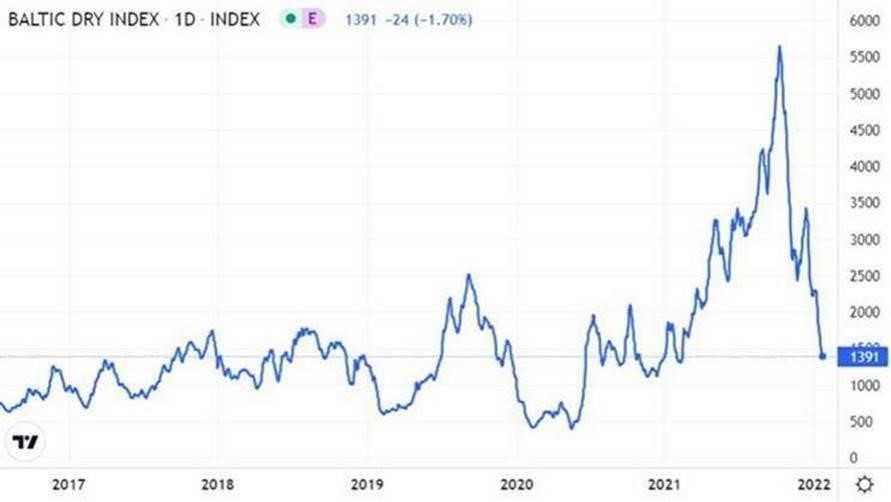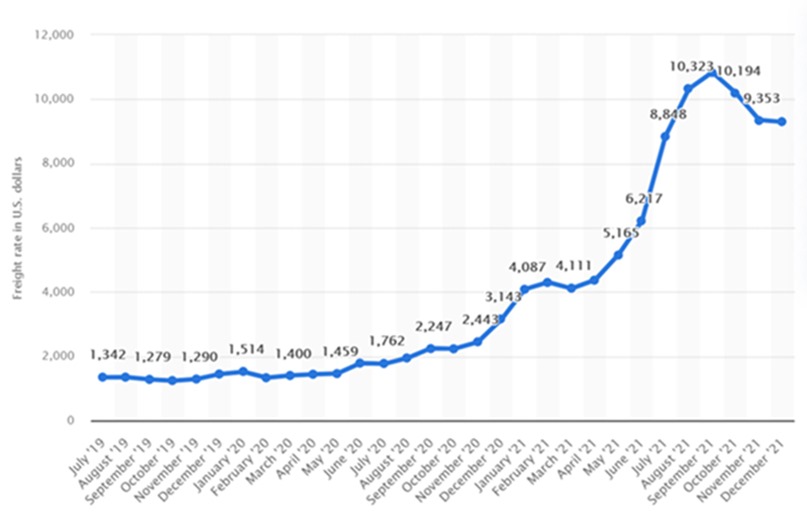Container shippers continue to face challenges of high shipping costs and unreliable timing of both container supply and product delivery.
‘The Baltic Dry Index (BDI), issued by the London-based Baltic Exchange, is an indicator of ocean freight rates for raw materials, including coal, iron ore and grain,’ says Neil Blue, provincial crops market analyst with Alberta Agriculture, Forestry and Rural Economic Development. ‘The index includes 23 shipping routes and covers Handysize, Supramax, Panamax (with 60,000 tonne capacity and able to cross through the Panama Canal) and the larger Capesize dry bulk carriers.’
The BDI reached a high of over 5600 in early October 2021. The BDI has since fallen to under the 1400 level, reportedly due to lower seasonal demand across all ocean vessels. The Capesize Index, which records the largest cargos of 150,000 tonnes, has now fallen to the lowest level since June 2020.
Figure 1. Baltic Dry Index

Source: tradingeconomics.com/commodity/baltic
In contrast, container shipping rates have eased only slightly from high levels reached in 2021. The increase in container shipping rates since May 2020 is attributed to continuing high demand for goods for people’s homes during the COVID-19 period. Many of these container-shipped goods are made in China and other East Asian countries, and destined for North America and Europe.
‘Both source and destination ports have been overwhelmed by the increase in container shipping,’ says Blue. ‘COVID-19 illnesses among port workers also contributed to the continuing congestion and shipping delays. Compounding the situation further is that demand for shipping containers is so strong that many containers are being shipped back empty from destination ports before being filled with goods bound for East Asian countries. That has created a major problem for North American goods that historically have used containers for their shipping.’
Figure 2. Container Shipping Rates

Source: www.freightos.com
‘The drop in bulk ocean shipping costs is beneficial to bulk exporters,’ explains Blue. ‘However, container shippers continue to face the challenges of high shipping costs and unreliable timing of both container supply and product delivery. This increases their financial risk and is another example of the disruptions caused by COVID-19. Relief in container shipping rates should occur within months following a decline in COVID-19 cases and easing of restrictions, as consumers turn more of their attention to out-of-home spending such as restaurant dining and travel.’
Source : alberta